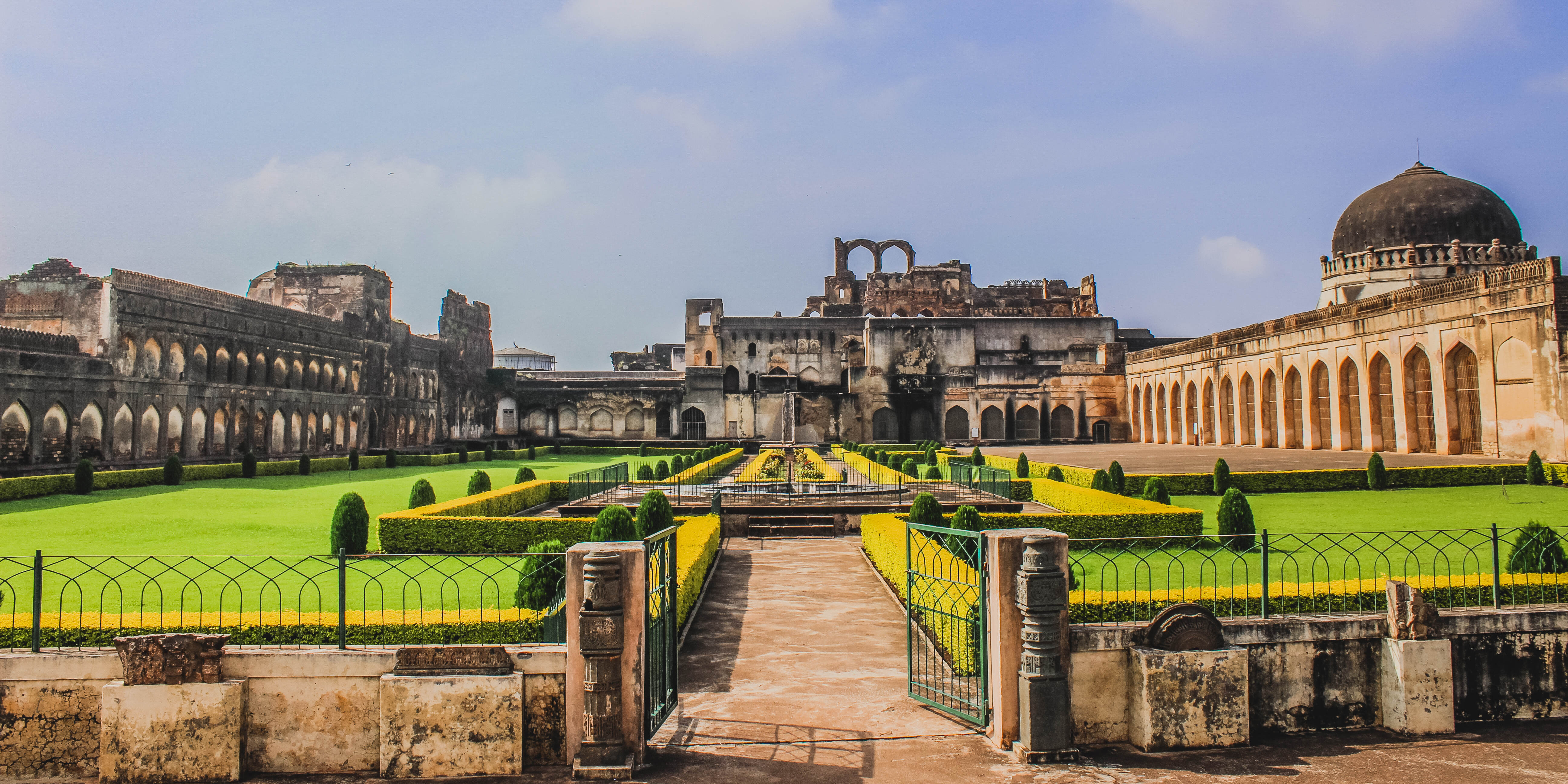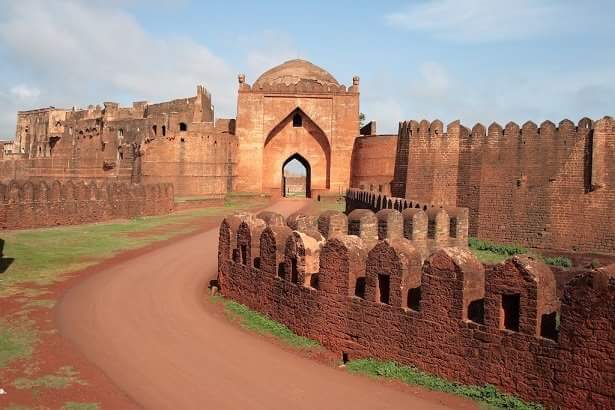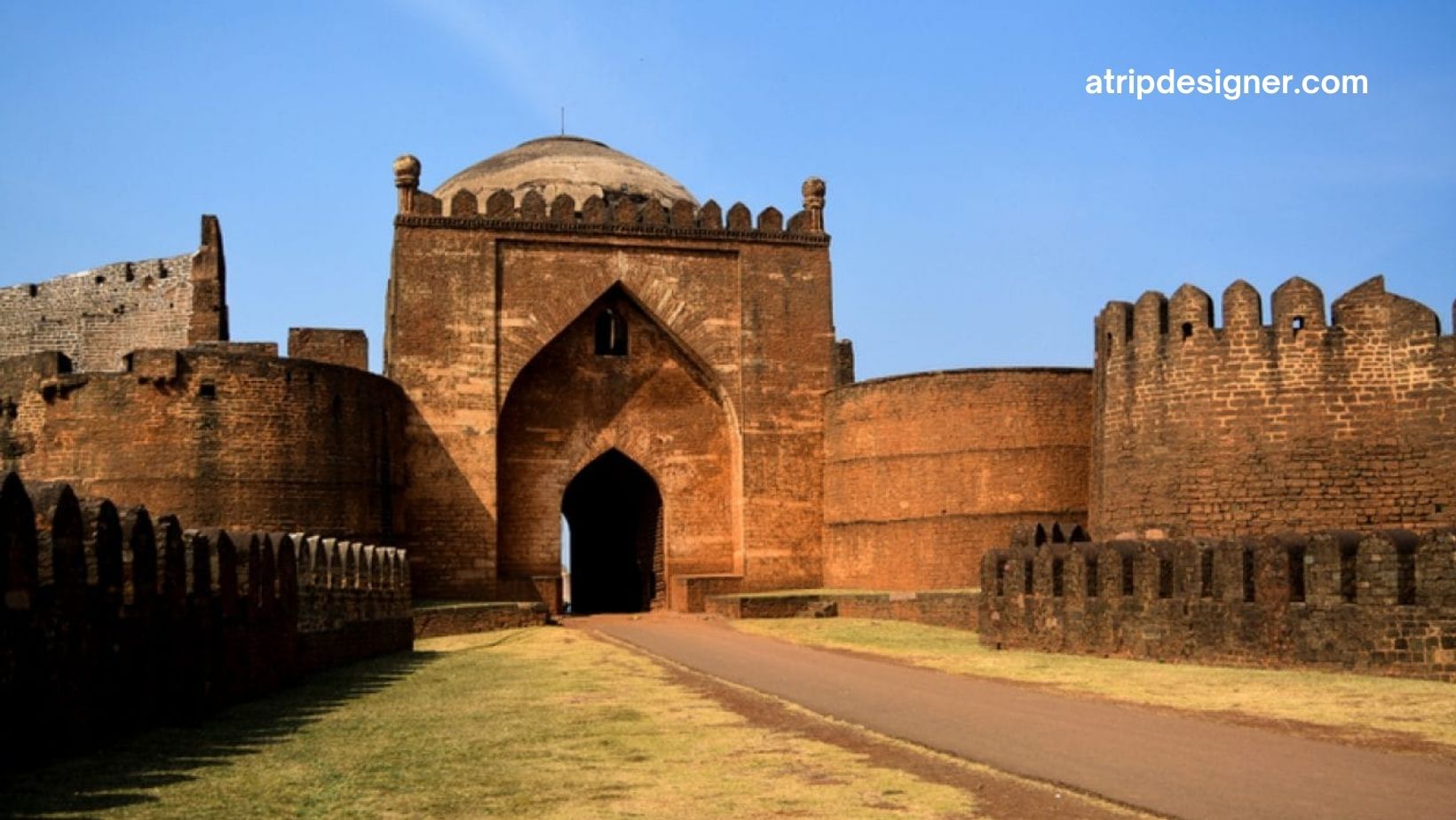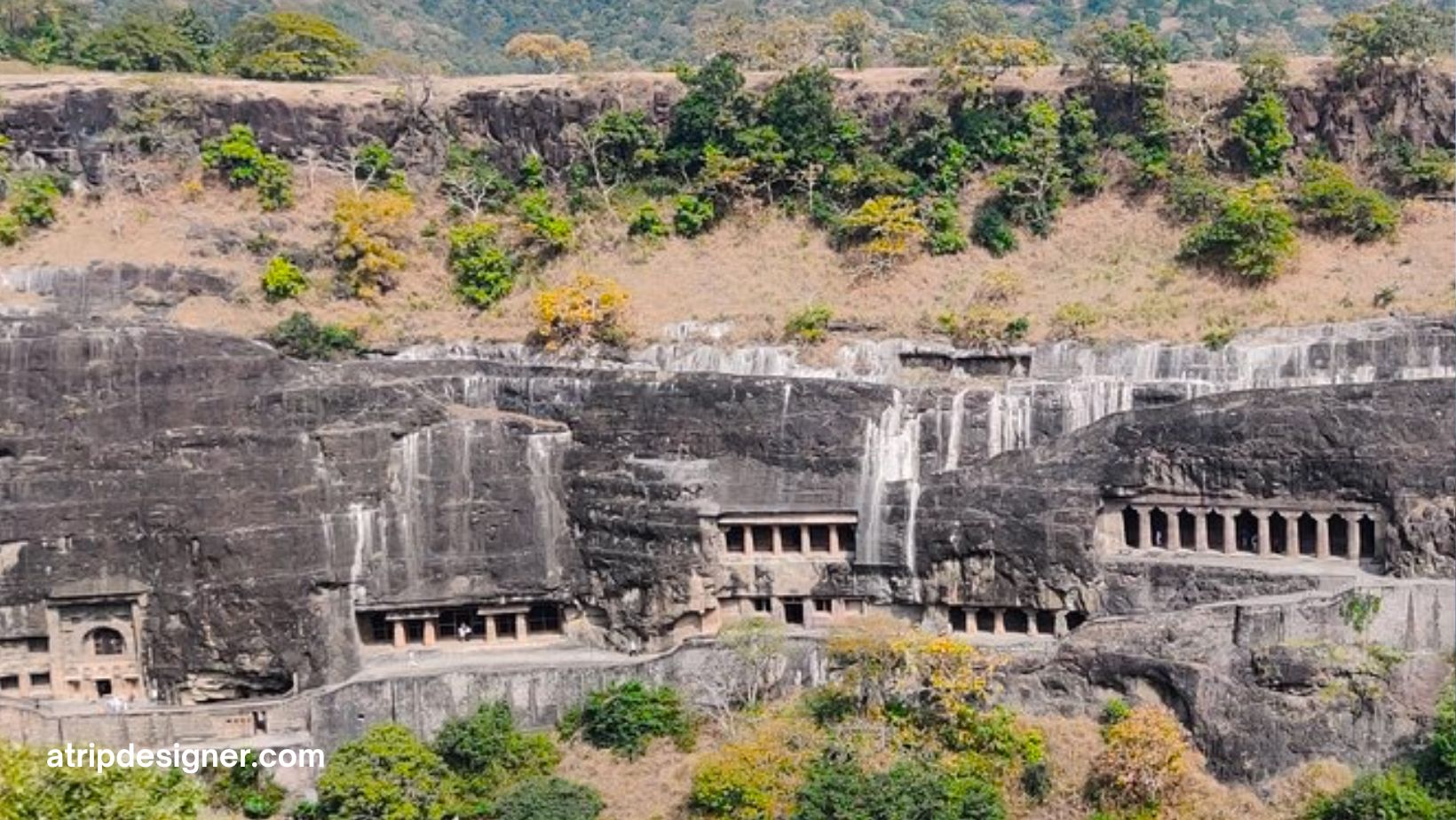Nestled in the heart of Karnataka, the Bidar Fort stands as a silent sentinel, guarding the secrets of a bygone era. A true testament to the architectural prowess of ancient India, Bidar Fort beckons history enthusiasts and adventure seekers alike to explore its mystique. In this article, we embark on a journey to uncover the fascinating history and architectural marvels hidden within the confines of this magnificent fort.
Bidar Fort: A Glimpse into the Past
Bidar Fort, alternatively referred to as the Ahmadabad Fort, stands as a precious gem among the historical treasures of Karnataka. Its inception can be traced to the 15th century when the Bahmani Sultanate undertook its construction, marking the commencement of a rich and storied legacy. Throughout the passing centuries, it underwent numerous refurbishments and augmentations, each imparting a lasting imprint upon its architectural grandeur.
 Also read – Kangra Fort Explore: Unraveling History Amidst Majestic Ruins
Also read – Kangra Fort Explore: Unraveling History Amidst Majestic Ruins
The Fort Layout
Before delving into the historical anecdotes that make Bidar Fort such a captivating destination, let’s take a moment to understand its layout. The fort sprawls across a vast expanse, covering over 5.5 square kilometers. It is fortified with triple layers of walls, each serving a unique purpose – the outermost for defense, the middle for the army, and the innermost for the royal quarters.
Bidar Fort Explore: Architectural Marvels
- The Gumbaz Mausoleum
As you step into the fort, the Gumbaz Mausoleum greets you with its striking dome. This mausoleum houses the remains of the Bahmani rulers, including Ahmed Shah I, the founder of the dynasty. The exquisite Persian and Mughal architectural influences are evident in the intricate stucco work and calligraphy that adorns the structure.
- Rangin Mahal
Bidar Fort’s Rangin Mahal, or the Palace of Colors, is a visual treat. It earned its name due to the vibrant paintings that once adorned its walls. Although many of these paintings have faded over time, the remnants still offer a glimpse into the opulence of the Bahmani era. The palace also features stunning Persian-style gardens, reflecting pools, and intricate lattice work.
Also read – Unveiling the Majesty of Delhi’s Red Fort: A Journey Through History and Culture
- Tarkash Mahal
Tarkash Mahal, or the Palace of Tiles, is a testament to the architectural brilliance of the Deccan sultanates. Its walls are adorned with beautifully crafted tiles from Persia, hence its name. These tiles depict scenes from Persian literature and offer a glimpse into the cosmopolitan culture of the Bahmani dynasty.
- The Solah Khamba Mosque
The Solah Khamba Mosque stands as a tranquil oasis within the fort’s confines. It derives its name from the sixteen pillars that support its structure. The mosque’s architecture reflects a fusion of Persian and Indian styles, creating a serene atmosphere that invites contemplation.
Bidar Fort Explore: Historical Significance
- The Bahmani Sultanate
Bidar Fort held immense significance throughout the Bahmani Sultanate era, serving as the kingdom’s capital for an extended duration, and bearing witness to the ebb and flow of dynasties. Its strategic positioning promoted trade and cultural interactions, thereby leaving an enduring imprint on the historical narrative of the region.

Also read – Unlocking the Mysteries of Sinhagad Fort: A Journey through India’s Rich Fort Heritage
- The Battle of Talikota
A pivotal moment in the annals of Bidar Fort’s past occurred during the Battle of Talikota in 1565, when the Deccan Sultanates clashed with the formidable forces of the Vijayanagara Empire. This monumental conflict witnessed a devastating defeat for the Vijayanagara Empire, forever altering the trajectory of South Indian history.
- The Nizam Era
With the decline of the Bahmani Sultanate, Bidar Fort fell into the hands of the Nizams of Hyderabad. Under their rule, the fort underwent significant renovations and additions, adding to its architectural splendor. It served as an important military and administrative center during this period.
Bidar Fort Today: A Living Heritage
While deeply rooted in history, Bidar Fort is far from being a mere relic of days gone by. Instead, it serves as a vibrant testament to Karnataka’s abundant cultural heritage. Delving into its hidden corners, you’ll come across residents who have made the fort’s surroundings their home, providing a window into the lively contemporary life that flourishes alongside its ancient stones.

Also read – Exploring the Enigmatic Havelis of Jaisalmer: Unveiling History and Culture
Exploring Bidar Fort
Exploring Bidar Fort offers a captivating voyage through history, a chance to forge a connection with bygone eras and admire the architectural marvels of yesteryears. Here are some valuable suggestions to enhance your experience:
- Guided Tours: Enhance your visit by considering the services of a knowledgeable local guide who can share captivating stories and historical anecdotes about the fort, adding depth and enrichment to your experience.
- Timing: Plan your visit during the early morning or late afternoon to avoid the scorching midday sun. Bidar Fort is best enjoyed in the pleasant ambience of these hours.
- Comfortable Footwear: The fort’s terrain can be uneven, so wear comfortable walking shoes to explore its various attractions.
- Photography: Don’t forget your camera or smartphone. Bidar Fort is a photographer’s delight, offering endless opportunities for stunning shots.
- Respect Local Customs: Remember that some areas within the fort may have religious or cultural significance. Be respectful of local customs and dress modestly when necessary.
Also read – Exploring the Enigmatic Havelis of Jaisalmer: Unveiling History and Culture
Conclusion
In conclusion, embarking on a journey to explore Bidar Fort is not merely a visit to a historical site; it’s a voyage through time itself. The fort, a living testament to Bidar’s illustrious history and remarkable architecture, invites us to explore the grandeur of its bygone era. As we wander through its time-honored walls and palaces, we embark on a journey into the pages of Indian history, uncovering stories of emperors, epic battles, and vibrant cultural exchange. Bidar Fort’s allure lies not only in its imposing structure but in the echoes of the past that reverberate within its precincts, making it a must-visit destination for history enthusiasts and wanderers alike.
Also read – Explore Marrakesh, Morocco for Your New Destination











